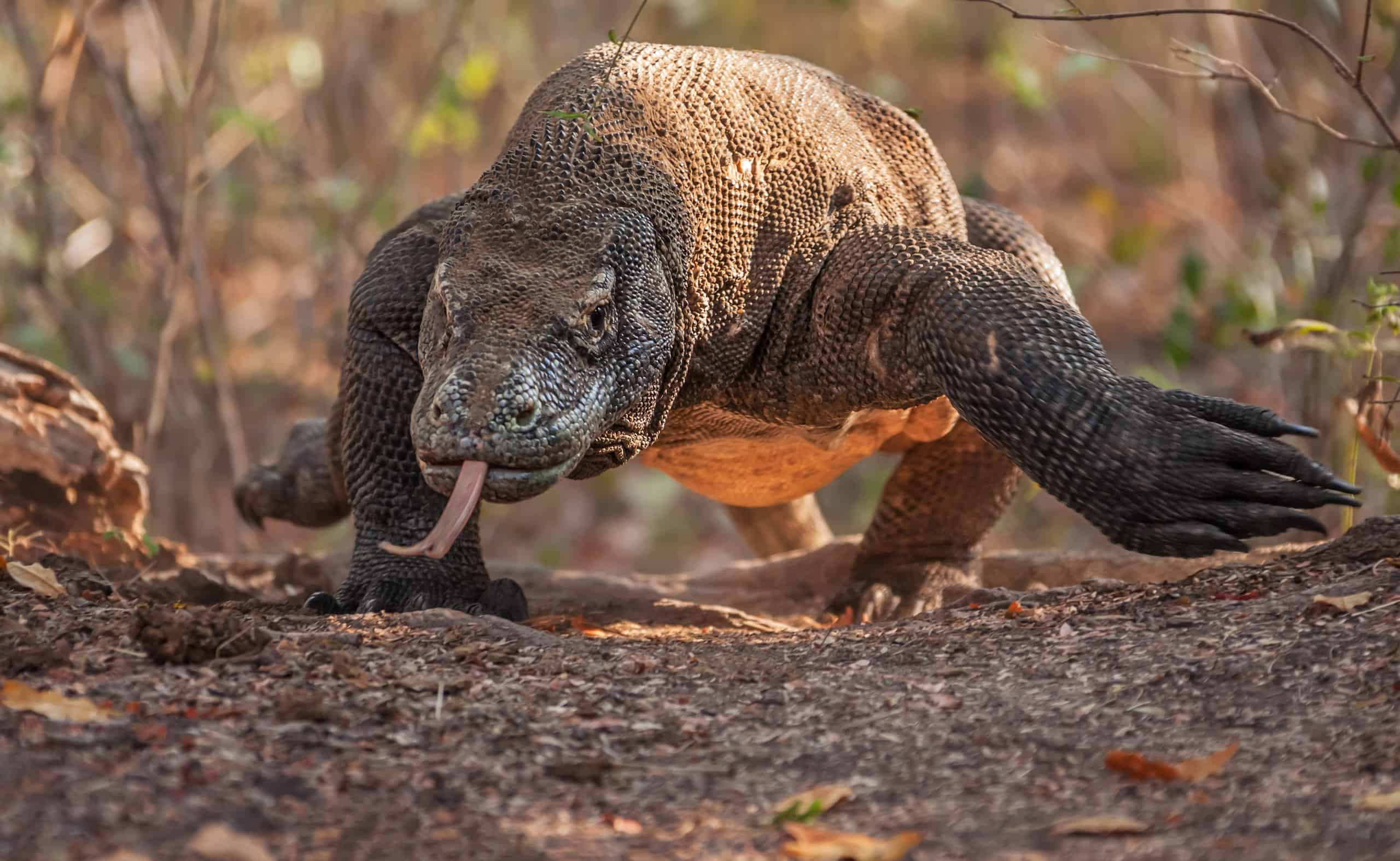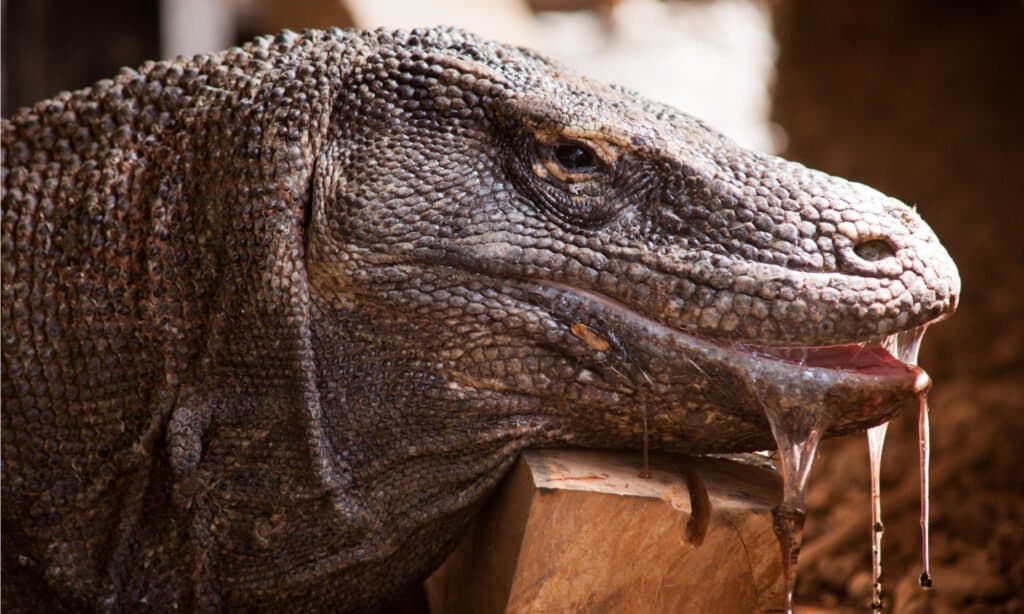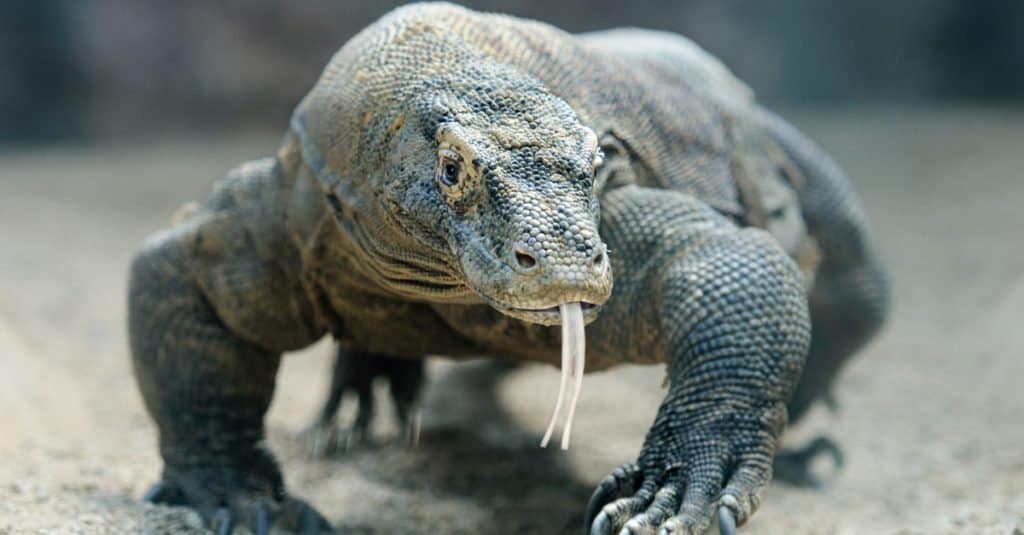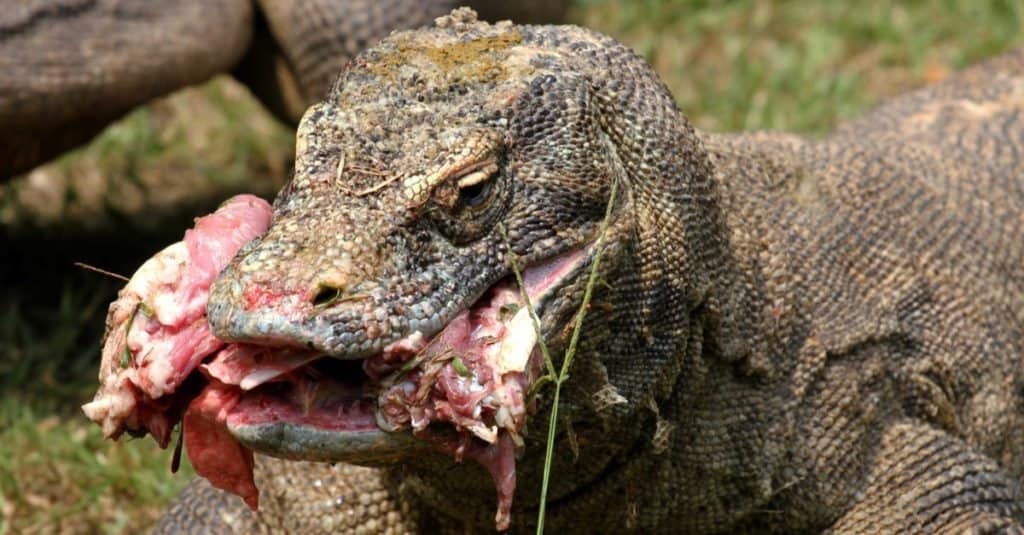Continue reading for our analysis...

The mighty Komodo dragon, the largest living lizard on Earth, holds a mythical allure that captivates the imagination. These magnificent reptiles are renowned for their sheer size, surprising strength, and rather prehistoric appearance. They were once an entirely unknown species, only discovered within the early 1900s!
With their fearsome reputation as apex predators, Komodo dragons have become something of a symbol of awe and wonder towards nature’s captivating diversity. We can get a glimpse of just how impressive these lizards can be in the short video below, which captures their inventive hunting tactics.
Let’s learn more about these unique creatures and some special characteristics they have.
Are Komodo Dragons Venomous?

Komodo dragons can grow up to 10 feet long and weigh up to 300 pounds.
©Luca Vaime/Shutterstock.com
While the danger of Komodo dragon bites was previously believed to be a result of bacteria present in their mouths, studies have since confirmed the venomous nature of their saliva. Basically, recent scientific research has revealed that Komodo dragons have specialized glands in their lower jaw that secrete venom-like toxins.
When a Komodo dragon bites its prey, these toxins are introduced into the wound, causing a variety of effects such as blood thinning, tissue damage, and a decrease in blood pressure, which are symptoms added atop the already crushing blow their forceful bite exerts.
Is it Normal for Komodo Dragons to Eat Buffalo?

Using their strong jaws and sharp, serrated teeth, Komodo dragons deliver a deadly bite.
©iStock.com/photomaru
As opportunistic carnivores, their menu consists of a wide range of prey, including small mammals, birds, and reptiles. However, their diet is not limited to smaller animals alone. Komodo dragons have been known to take down larger prey, such as deer and water buffalo, much like we see in the clip below.
Komodo dragons employ their powerful jaws and sharp, serrated teeth to deliver a lethal bite. They also possess a keen sense of smell that allows them to detect carrion from miles away, enabling them to scavenge when necessary if actively hunting for prey proves to be difficult for any reason.
Are Komodo Dragons Endangered?

Komodo dragons are unfortunately currently considered an endangered species.
©Yudi S/Shutterstock.com
With their limited range native to a few Indonesian islands and only a small population in the wild, Komodo dragons are unfortunately currently considered an endangered species. Thankfully, awareness of their plight is not unheard of, and conservation for both Komodo dragons and their natural habitats do exist.
Luckily for water buffaloes, they are prolific agricultural animals that have vast populations across many regions of Earth. Humans worldwide rely on them for the range of services and products that water buffaloes provide, often including manual labor like tilling fields and transporting riders over rough terrain.
How Large Are Adult Komodo Dragons?

Komodo dragons are the largest and heaviest living lizard on the planet.
©Midori; derivative work: WolfmanSF, CC BY-SA 2.1 JP – Original / License
With an average weight of around 154 pounds, although they can reach weights of over 300 pounds, the Komodo dragon is the largest and heaviest living lizard on the planet. Like many animals, the males tend to weigh more than the females and fully grown adults can reach 10 feet in length. The largest Komodo dragon ever recorded was 10.3 feet and weighed 366 pounds.
Thank you for reading! Have some feedback for us? Contact the AZ Animals editorial team.







